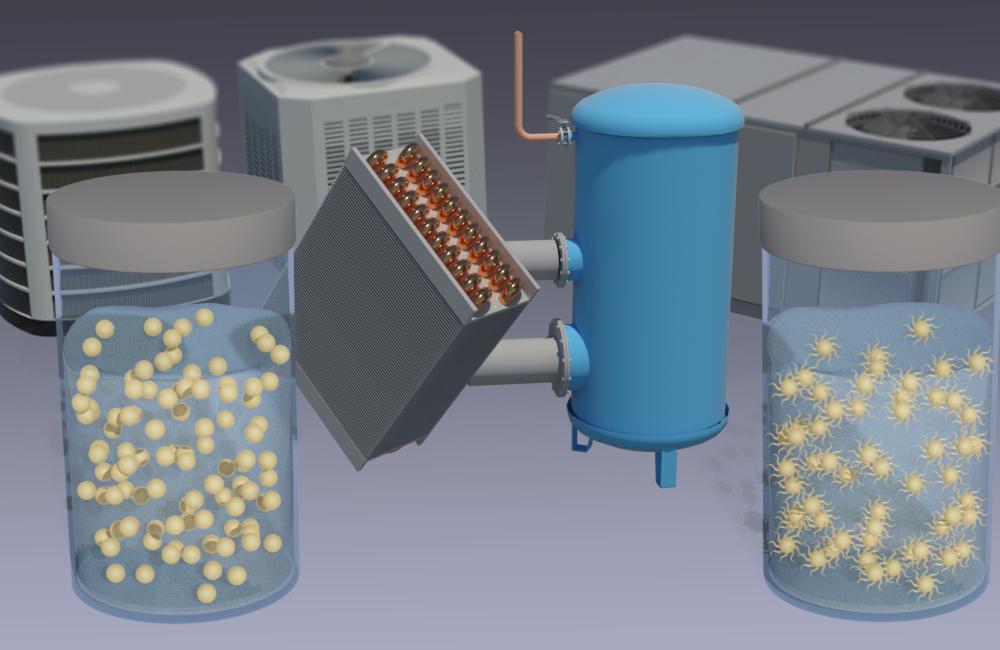ORNL researchers found that a polyelectrolyte additive can improve the stability and performance of a salt hydrate PCM, enhancing the potential for use in heat pumps. Credit: ORNL, U.S. Dept. of Energy
Additive mixture stabilizes phase change material, unlocks potential for heat pumps
Oak Ridge National Laboratory researchers demonstrated that an additive made from polymers and electrolytes improves the thermal performance and stability of salt hydrate phase change materials, or PCMs, a finding that could advance their integration into carbon-reducing heat pumps.
PCMs absorb and release energy when changing between solid and liquid forms, making them suitable for heating and cooling applications. They’re also prone to phase separation and instability, which limits thermal energy storage capacity.
In an ORNL-led study, eight different polymer mixtures were added to the PCM. Synthetically made and naturally occurring polymers were tested. Results showed that the polyelectrolyte additive, dextran sulfate sodium, can achieve the best performance.
“The pure salt hydrate PCM cannot sustain up to 10 melt-freeze cycles, but with the additive, stability is retained after 150 cycles,” ORNL’s Damilola Akamo said. “This determination will help inform the design of thermal storage materials in low-carbon-emitting heat pumps for residential and commercial buildings.”







